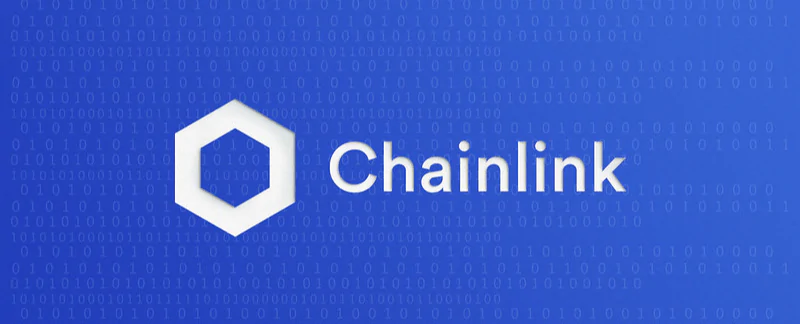Greece has made significant efforts to adopt a tax policy on crypto assets as the use of cryptocurrencies grows globally. In January 2025, the Greek government introduced new tax regulations for cryptocurrency transactions.
18.08.2022

Chainlink, launched in 2017, is a key innovation in the blockchain ecosystem that enables smart contracts to connect with real-world data. It operates through a decentralized oracle network known as Oracle Chainlink, which ensures secure interactions between smart contracts and external data sources, events, and payment systems. By bridging blockchain technology with off-chain resources, Chainlink positions itself as a vital platform for making digital contracts more useful and reliable.
The platform thrives on decentralization, empowering node operators to contribute data and earn rewards. Developers have made the system open-source, allowing researchers, data providers, and cybersecurity professionals to collaborate and strengthen the platform. This architecture connects external data providers with blockchain networks like Ethereum, effectively linking the digital and physical worlds.
The dual-layer architecture of Chainlink
Chainlink’s framework is built on two main components:
Off-chain Oracle Network: A decentralized system of independent oracles collects data from external APIs.
On-chain Protocol: This integrates external data into smart contracts and ensures it is correctly interpreted within the blockchain.
Founders of Chainlink Labs
Sergey Nazarov, the company’s CEO, graduated from New York University and later taught at the NYU Stern School of Business. Alongside software engineer Steve Ellis, he co-created early smart contract applications in 2014, eventually leading to the creation of Chainlink. Their early work integrated smart contracts with banking systems and external data feeds, laying the groundwork for what Chainlink is today.
In 2017, Chainlink held an ICO that raised nearly $33 million. Of the total token supply, 35% went to public exchanges, 30% was retained for project development, and the remainder was distributed among team members as incentives.
Chainlink network and the LINK token
Chainlink developed its own cryptocurrency, LINK, to reward node operators. LINK is an ERC-20 token with enhanced features like ERC-223 and ERC-667, enabling efficient transaction handling and interoperability with Ethereum-compatible wallets like Trust Wallet and MetaMask.
Operators are encouraged to stake LINK tokens, which helps ensure long-term commitment and network reliability. However, staking doesn’t increase the token’s circulating supply, and failing to follow network rules can result in token loss.
How the Chainlink system works
Smart contracts automate and enforce blockchain transactions, but they’re limited by their inability to access data outside the blockchain. Chainlink solves this problem using decentralized oracles that fetch, verify, and feed real-world data into smart contracts. This reduces the risk of fraud and ensures smart contracts execute based on accurate, trustworthy data.
What sets Chainlink apart is its decentralized oracle model, which avoids dependence on a single data source. This enhances reliability and prevents manipulation or failure caused by compromised oracles.
When a smart contract needs external information, Chainlink processes the request through its network of oracles. The network assesses multiple data sources, selects the most reliable one, and delivers verified information to the smart contract – strengthening security and data accuracy.
Buying and mining LINK
The maximum supply of LINK tokens is capped at 1 billion. While part of this was sold during the ICO, a substantial portion remains reserved. You can buy LINK on major crypto exchanges like Binance, Coinbase Pro, WhiteBIT, Huobi Global, OKX, and BitMax.
Although mining LINK with a basic CPU or GPU setup is technically possible, it’s not recommended for individuals due to high operational costs. Instead, pooling resources through mining farms or collective mining setups is advised for profitability.
Chainlink and DeFi
The DeFi space is growing rapidly, creating a demand for secure, reliable oracles. Chainlink is essential here, helping smart contracts connect with external data sources safely. However, risks like data leaks and fraud remain challenges in DeFi platforms. Experts suggest avoiding dependence on a single oracle to mitigate vulnerabilities.
In 2020, Chainlink suffered a spam attack that resulted in the loss of 750 Ethereum. Despite this, the team continues refining their algorithms to prevent future incidents.
Chainlink outlook and forecast
Chainlink’s technology is widely recognized and supported by strategic partnerships with platforms like Zilliqa, Synthetix, Celer, and Hedera Hashgraph. These collaborations have boosted the platform’s ecosystem and credibility.
With strong backing from both novice and seasoned investors, LINK has gained significant market traction. The coin’s utility now extends to futures trading, attracting more users seeking to amplify profits. Despite past setbacks, Chainlink remains a prominent player in the crypto space. As the team works on integrating blockchain with real-world applications, LINK is likely to stay competitive for the foreseeable future.




